By: Pacific Corrugated Pipe Company
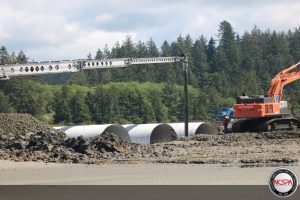
Pacific Corrugated Pipe Company of Eugene, Oregon was contacted to help in a $40M restoration of a sand dune critical to the habitat and community of the Shoalwater Bay Indian Tribe located near Tokeland, Washington. A temporary haul road and culvert crossing would need to be built to cross a 700′ wide saltwater slough to rebuild the southern dune next to the Pacific Ocean which had been destroyed.
Heavy storms occurred in 2020 & 2021 which generated sand dune over topping and over-wash and 100% dune cross section loss. The deteriorated dune barrier left the land susceptible to massive ocean wave forces, causing life safety concerns as well as potential infrastructure damage of millions of dollars for the Shoalwater Tribe and the surrounding community.
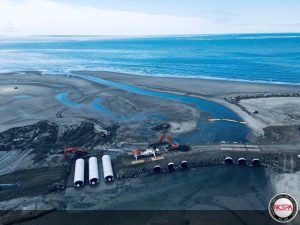
In effort to remain federally compliant, the United States Army Core of Engineers (USACE) conducted a supplemental environmental analysis in accordance with the emergency federal funding ACT. A study was conducted to understand impacts on the following wildlife in the endangered species category: western snowy plover, streaked horned lark, southern green sturgeon, Lower Columbia River Chinook, Upper Willamette River Chinook, Columbia River chum, streaked horned lark, and southern green sturgeon. This analysis reinforced the sensitive nature of the aquatic life nearby and therefore, a non-galvanized corrugated metal culvert would be specified for the slough crossing.
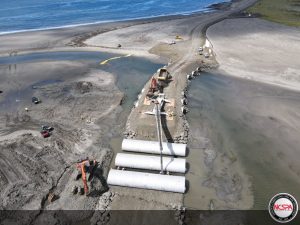
After full compliance with all involved agencies a USACE awarded the project to Environmental Chemical Corporation (ECC). ECC utilized Pacific Corrugated Pipe Company (PCPC) for the design build of a causeway near the end of a 4,700′ long 30′ wide temporary haul road. The causeway would be designed utilizing four 3-barrel x 60′ wide crossings of the largest diameter arch pipe manufactured for delivery on roadway (144″ arch pipe). The pipe would be installed during low tide to reduce impact to the surroundings. The partially submerged installation of the arch pipe would mean critical steps had to be taken to resist flotation and ensure proper compaction.
PCPC advised that a trench type installation would be necessary to get proper compaction for the dune restoration. The team consensus was to construct “stone columns” that were 60′ wide at the base and 30′ wide at the top utilizing 1-3 Ton rip rap as the core. This resulted in a textbook installation that couldn’t be found in any textbooks!
To ensure proper installation of the 144″ arch pipe, a 90′ long telabelt conveyor was necessary to reach the haunch of the pipes for necessary compaction using “railway ballast”. The partially submerged installation presented a safety challenge to the contractors. Mitigating the safety risk during the dune restoration was achieved by weighing the pipe down using 2-ton super-sacs on each end of each culvert during the backfill period. The supplemental weight proved adequate to resist buoyancy force from the ocean current as well as shifting sand beneath the pipe. Once this process was confirmed effective, it was repeated 23 more times!
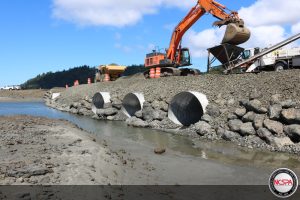
Success was realized when several hundred loads were delivered across the culvert causeway using a 75-ton dump truck (along with all other equipment) countless times. Finally, USACE included several conservation measures designed to mitigate the adverse effects caused by dredging and temporary culverts.
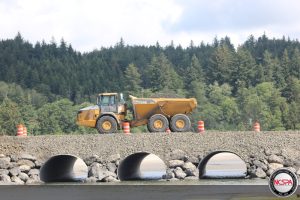
The USACE is now a more supportive fan than ever of corrugated metal pipe. Just another example of the creative wonders of CMP being used to solve todays unique challenges.
Related Stories
Project Spotlight: Dry Creek Restoration Project Phase 2
2022 Project of the Year Winner – Rehabilitation: Brookport Levee Culvert Reline